If you’re an espresso lover—or a Starbucks lover—you’d be in good company to be asking yourself, “what espresso machine does Starbucks use?“
The story behind the answer may surprise you, since as far as coffee makers go, the Mastrena Espresso Machine that Starbucks relies on for some of its most popular coffee is wonderfully intriguing.
In this article, we will talk about the company that makes Starbucks’ espresso machine, as well as the history of their machines.
You’ll also learn about the Mastrena machine. And last but not least, you’ll learn about the history of Starbucks machines.
Now, you can get your own coffee-making machine and enjoy the same quality as Starbucks!
So, let’s get started!

What Espresso Machine Does Starbucks Use – Brand?
The simple answer: it depends on the branch.
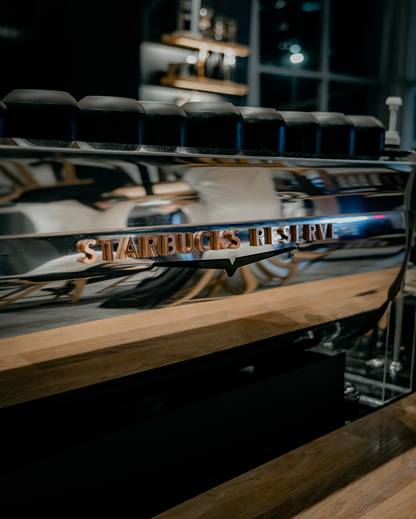
In most cases, it’s a model called the Mastrena, made by Thermoplan AG exclusively for Starbucks, although there are still some that employ a version of a Bunn machine made for commercial use.
The Mastrena High-Performance Espresso Machine is classified as a ‘super-automatic espresso machine’, and it has the skills to back that up.
Read on to find out what makes the Mastrejkna special compared to standard espresso machines, and why it’s unique to Starbucks Coffee.
Thermoplan AG — A Brief Backstory
Thermoplan is a Swiss coffee machine manufacturer that was founded in 1974. Its first coffee machine was developed in 1995, and it now serves customers in 75 countries.
The company has headquarters in Weggis, Switzerland, and subsidiaries in Germany, Austria, and the United States.
Founded by a coffee lover, Thermoplan has grown to include a global presence with several hundred employees.
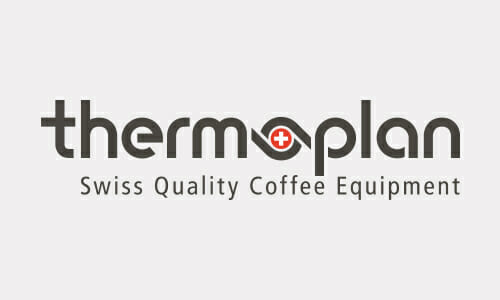
Adrian Steiner, the CEO since 2009, joined the company as a customer service representative in 1997.
What sets Thermoplan apart from other coffee machine manufacturers?
Well, aside from the fact that they have an exclusive contract to manufacture and support custom-designed proprietary equipment for Starbucks, their coffee machines are connected to a cloud system.
The company has been a market leader in coffee machines for years, and their machines have won awards and accolades in the industry, both for and beyond the proprietary Starbucks machine.
History Of Starbucks Espresso Machines
Luigi Bezzera’s Influencce
Before 1901, even the highest-end coffee establishment was producing its recipes using a conventional coffee machine,
It was that year that inventor Luigi Bezzera enhanced the design of the machine by adding steam pressure—effectively creating the espresso machine.
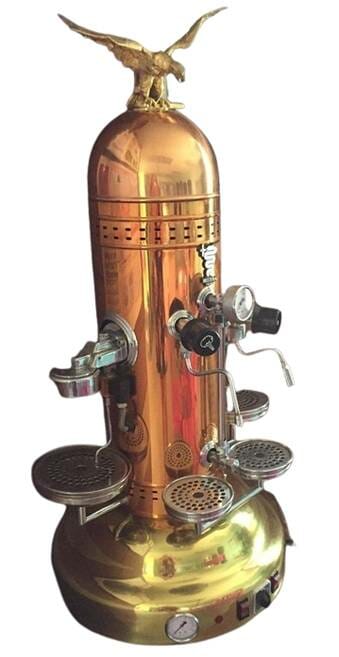
Without this invention, Starbucks’ coffee machine may not have ever had the chance to evolve into the automatic espresso machine that’s a staple of Starbucks coffee today.
The Italian word ‘espresso’ means ‘fast’, and so the coffee produced by this machine was shortened to espresso.
Desiderio Pavoni bought Bezzera’s rights in 1905 and produced the first espresso machine in the United States.
The Original: La Marzocco
When Starbucks opened its first coffee shop in Seattle in 1989, it didn’t have an exclusive espresso machine. Instead, they used a La Marzocco Linea model.
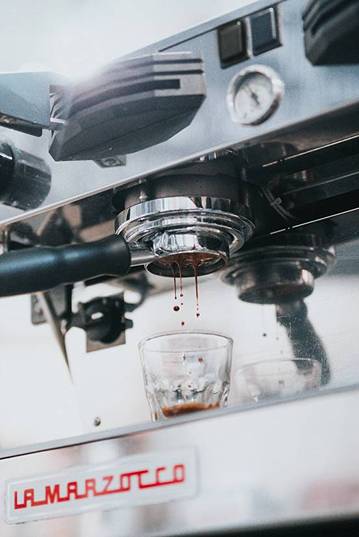
Because of its complexity, the machine required a certain level of skill from the baristas who worked there.
As the company expanded internationally, they started focusing on automation and as a result, introduced newer models.
In 2007, they partnered with La Marzocco directly to produce a new model called the Linea PB, which improved significantly on the functionality and output of the original model they’d been using.
Enter Mastrena
Since then, Starbucks has continued to update the machines that power their products and cafes.
The Mastrena “super-automatic” espresso machine has evolved to become the standard machine in many of its stores.
With growing popularity, an ever-expanding store base, and as the beneficiary of an enormously successful brand marketing strategy,
Starbucks coffee quickly became the strongest name in luxury coffee products.
Demand was through the roof, meaning customer traffic and coffee production volume was surging.
At the same time, Starbucks needed to be able to rely on the average skills of a new hire—and not be dependent only on finding a skilled barista for each shop.
Automation & Scale
As a massive corporate entity, profits also became more of a focus. The common response to all of these factors was a strong drive toward automation.
The company needed a way to standardize high-quality coffee not just throughout the day, but across all of its locations as well.
It needed to make producing it easy and identical at every coffee shop, reducing the number of steps involved and eliminating variability dependent on the actions of any individual employee.
Brilliantly, the company chose to look at its production in stores as something of a mini factory production line, with artisan coffee as the final product.
It set out to design a machine that could connect and integrate as many steps in the process as possible, even down to including a built-in coffee grinder so it can brew delicious, consistent coffee all the way from whole coffee beans.
Because of Starbucks’ involvement and unique needs, the Mastrena is manufactured exclusively for Starbucks by Swiss company Thermoplan AG.
What Makes The Mastrena Espresso Machine Special?
The Mastrena is a super-automatic espresso machine made by Thermoplan. Its single spout and flat spare are unique features of this espresso machine.
It has four buttons, including a triple shot button, at the top of the machine.
It has a simple set of 4 illuminated buttons at the top, allowing for easy muscle-memory supported operation during fast-paced operating hours.

The full-color LCD screen keeps track of brew time for each cup in progress so that no time is wasted and coffee is never left to get cold or keep a customer waiting.
The Masterna machine is fully computerized, allowing it to produce lattes and cappuccinos faster than the competition.
The machines are exceptionally easy to use with the touch of a button, and provide customers with a rich, aromatic cup of coffee at a consistent rate.
The machine is far more robust and reliable than most other commercial espresso machines and is able to continuously brew whole bean coffee from beans it grinds itself without getting clogged or breaking down.
The Clover Coffee Maker
The other end of the Starbucks spectrum
If you’re this into coffee equipment and how Starbucks brews its coffee beans, you may have also heard of the Clover coffee machine.
Originally developed by the Coffee Equipment Company in Seattle (no surprise there), you can consider the Clover coffee maker the equal opposite of Starbucks’ Mastrena espresso maker.
The Clover is designed for single cups of non-espresso coffee. It’s not meant to churn out shots at a couple hundred per hour for use in various coffee-based drinks.
Instead, it was made to brew artisan coffee from top-quality coffee beans, to be enjoyed as-is. It also happened to be an exceptionally well-built coffee machine.
Unsurprisingly, Starbucks purchased the rights to the Clover brewing system in 2008, which is why it has a reputation as Starbucks’ coffee machine.
What this machine can do with some high-quality ground coffee beans makes it highly worthy of a premium spot on Starbucks’ bar—nicely balancing the high-volume powers of the Mastrena.
How much do Mastrena Espresso Machine Cost?
$15,000 to $18,000 USD for most Mastrena espresso machines Starbucks uses. However, some models can go up to $30,000 apiece.
A bit pricey, but they’re worth it—if you’re a multibillion-dollar global coffee conglomerate.
They’re wildly out of the price range for nearly any individual coffee enthusiast. But they would also be overkill in a personal environment.
The core value of the Mastrena comes in its ability to turn Starbucks’ coffee business into an automated assembly line for artisan brews.
Without the need for that optimization, output volume, automation, connected features and maintenance resilience, any individual can get a comparably delicious cup of espresso at home without going through the trouble of hunting down and shelling out for an actual Mastrena.
Can Anyone Buy One of Starbucks’ Espresso Machines?
Officially, no. The Mastrena was designed specifically to Starbucks’ specifications, and it has an exclusive license with Thermoplan.
They’re so specialized they’re technically not even considered coffee appliances, but purpose-made machinery.
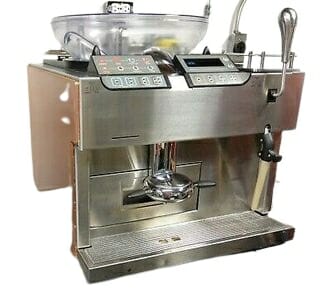
It is technically possible to acquire a Mastrena outside of official channels, but we can’t advise going this route.
Even if you were committed to tracking one down for your own personal use, you’d need to be prepared to spend between $15,000 and $30,000 for the privilege.
Conclusion
If you’re a fan of popular Starbucks coffee, it’s understandable that your first step in trying to reproduce the delicious drinks made in Starbucks stores might be to learn about the equipment the company entrusts its coffee beans to.

The commitment Starbucks has to its machinery is incredible, and the fact that the company has kept quality and customers at the forefront of its efficiency-fueled innovations is beyond admirable.
The history of the company’s operations and the path they’ve taken to evolving into the automated coffee shops they are today is fascinating.
The machinery they’ve acquired, advanced and developed in order to make that a reality is even more so.
At the end of the day, if what you’re really after is some robust, Starbucks-like whole bean coffee, or just to give your coffee beans their best shot at brewing into an artfully crafted cup of coffee, you really don’t need a Clover or a Mastrena to do it, and considering the legal gray area you’d find yourself in if you somehow managed to find one of either for sale, we’d recommend trying one of our methods for brewing some excellent, Coffee Geek-approved coffee.

